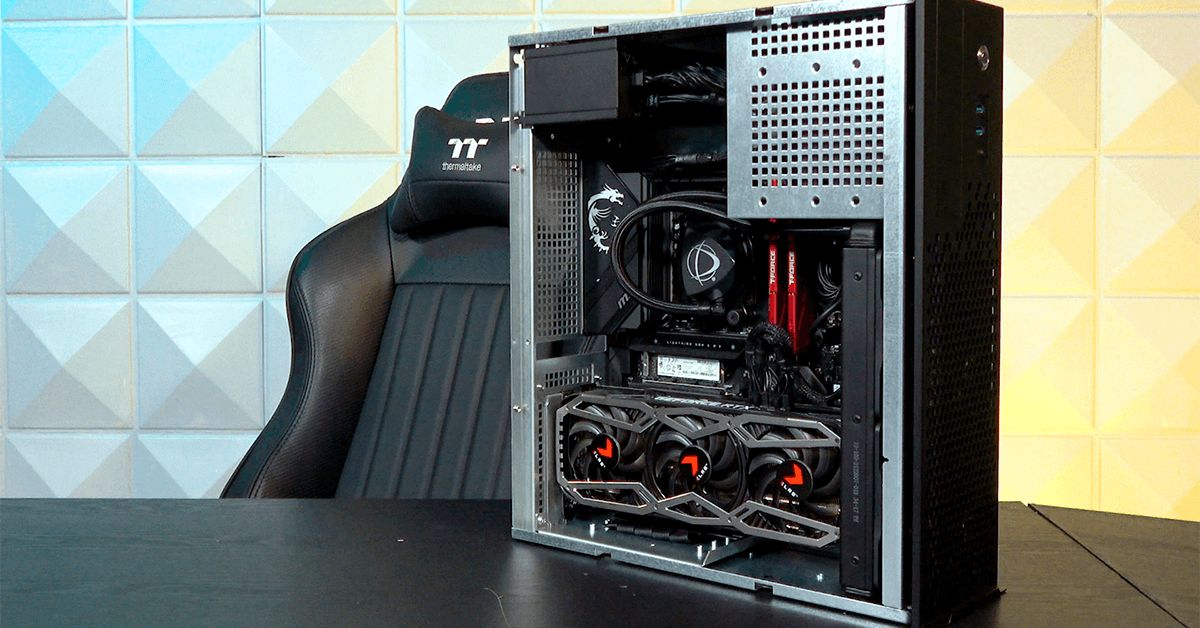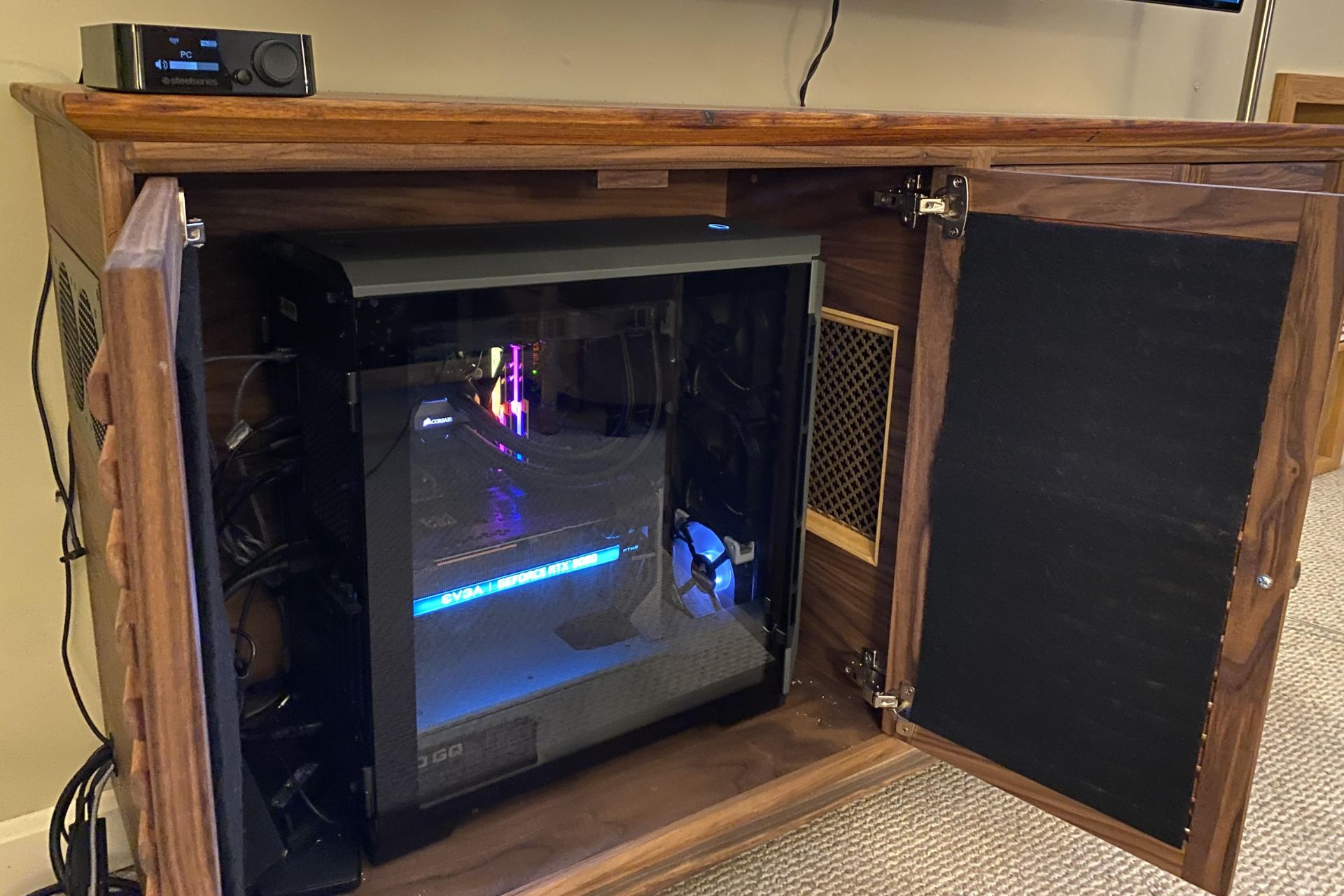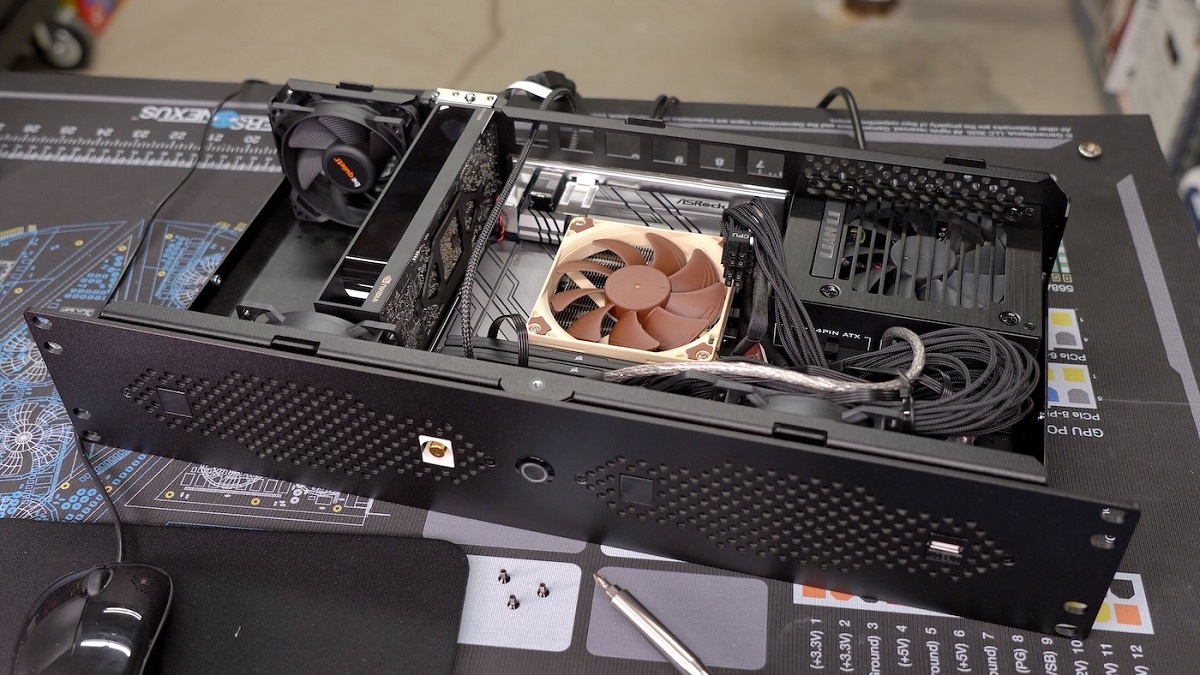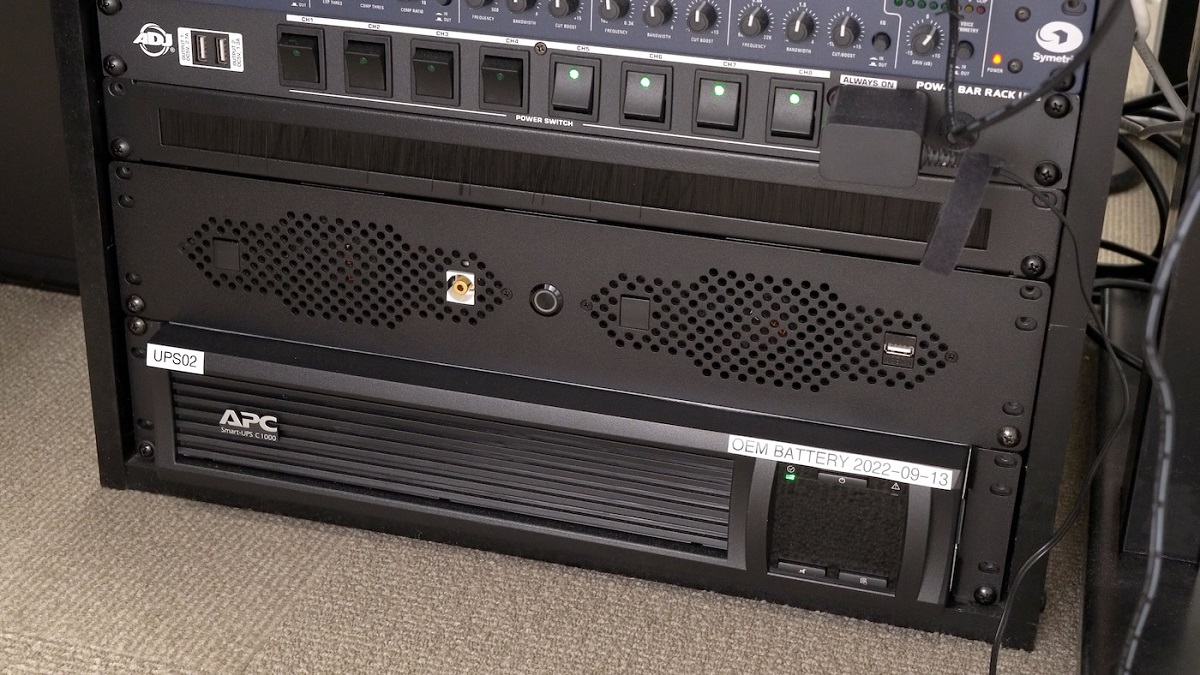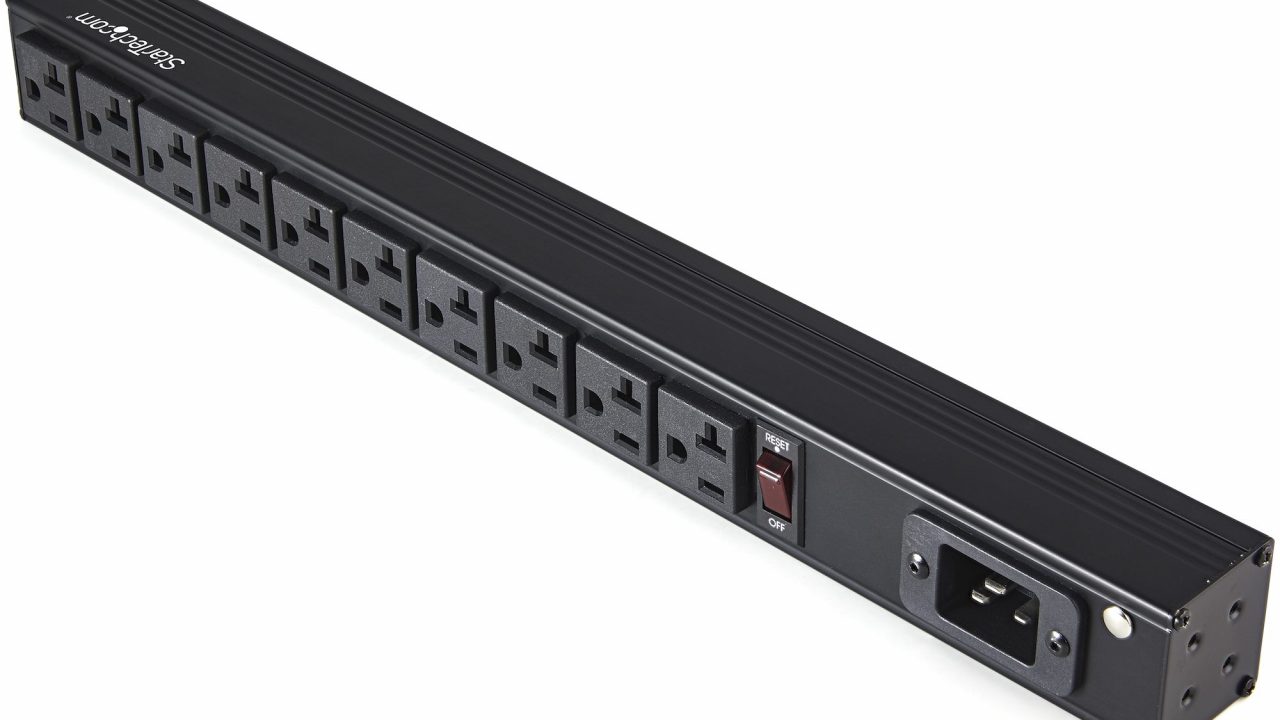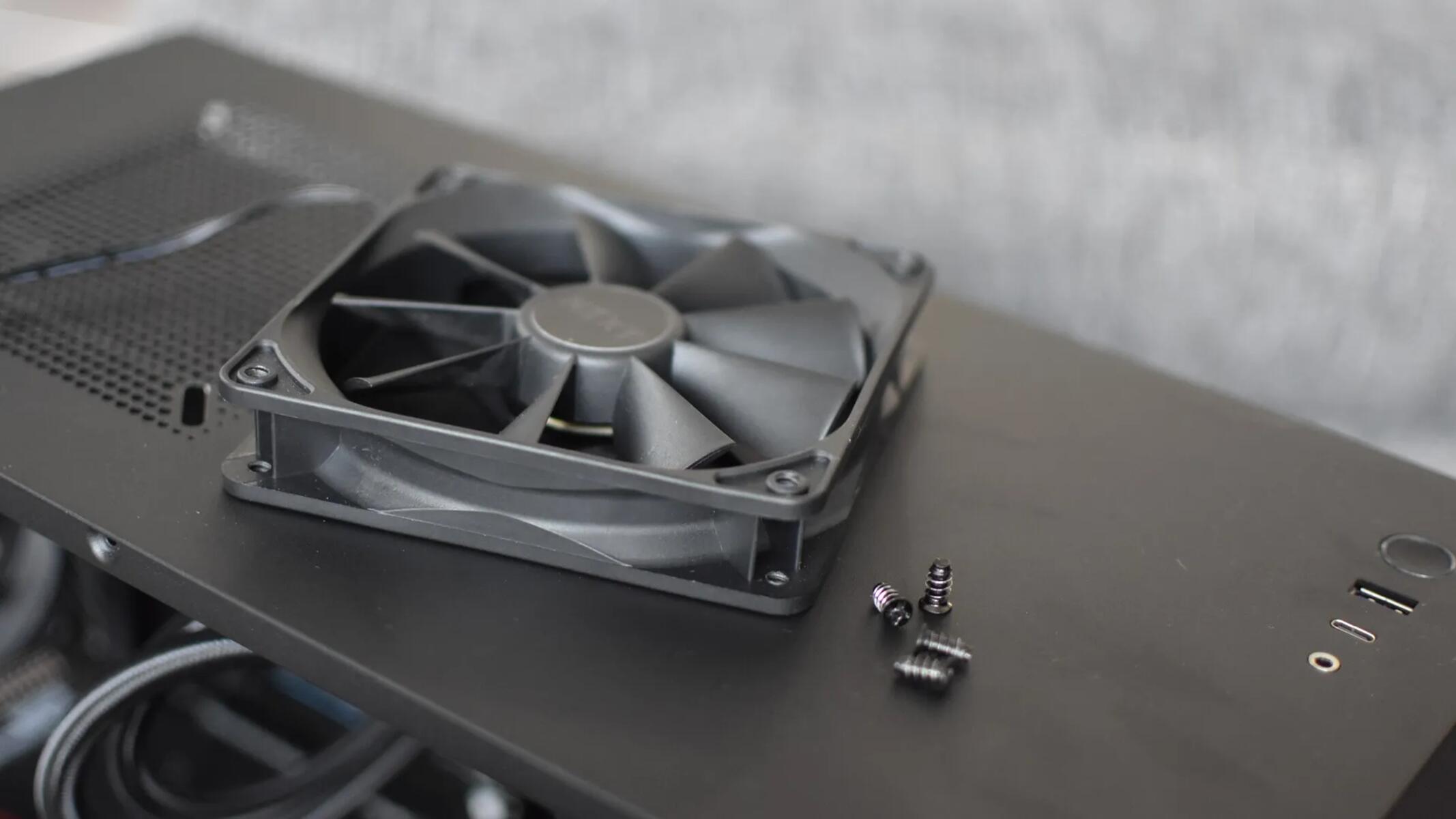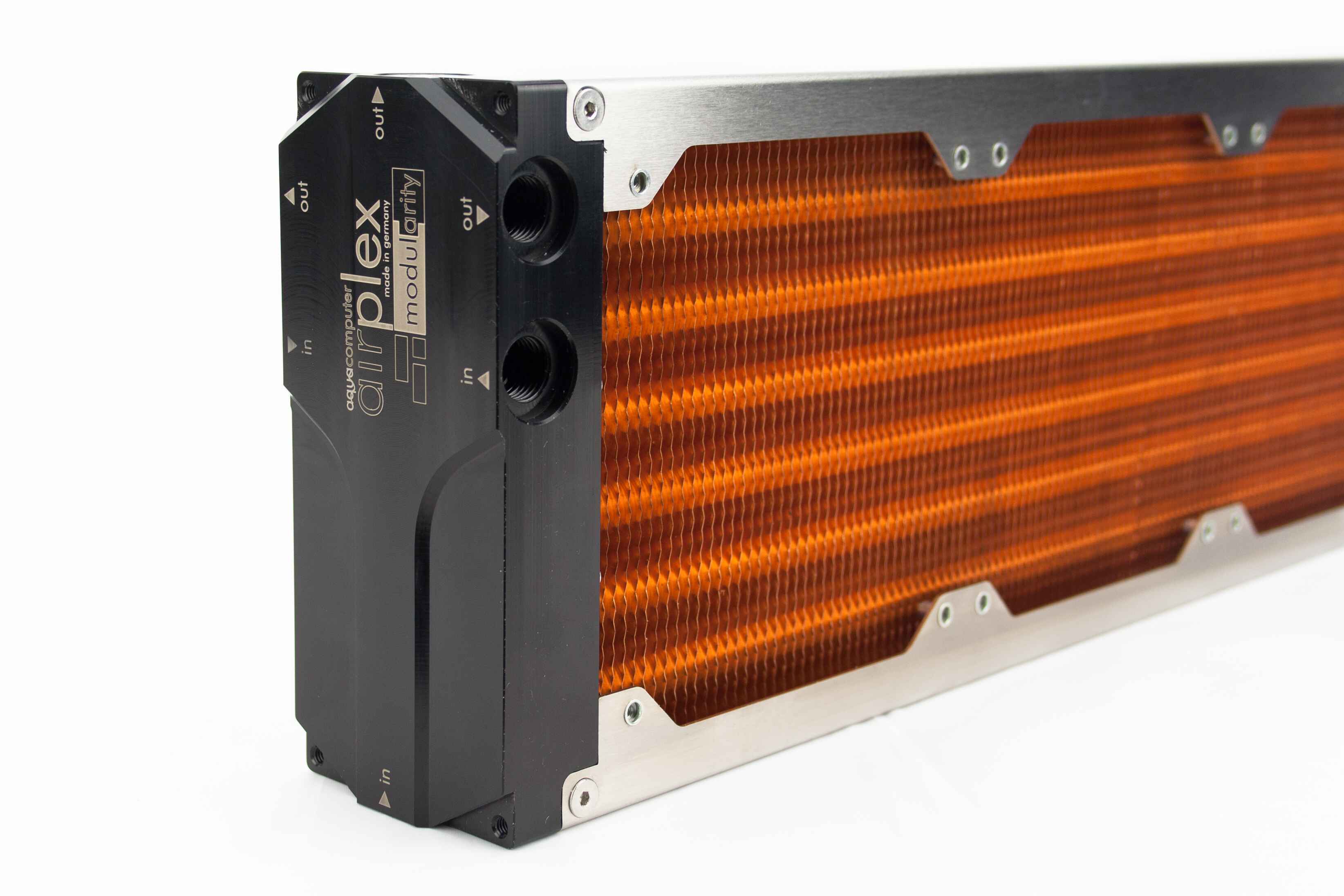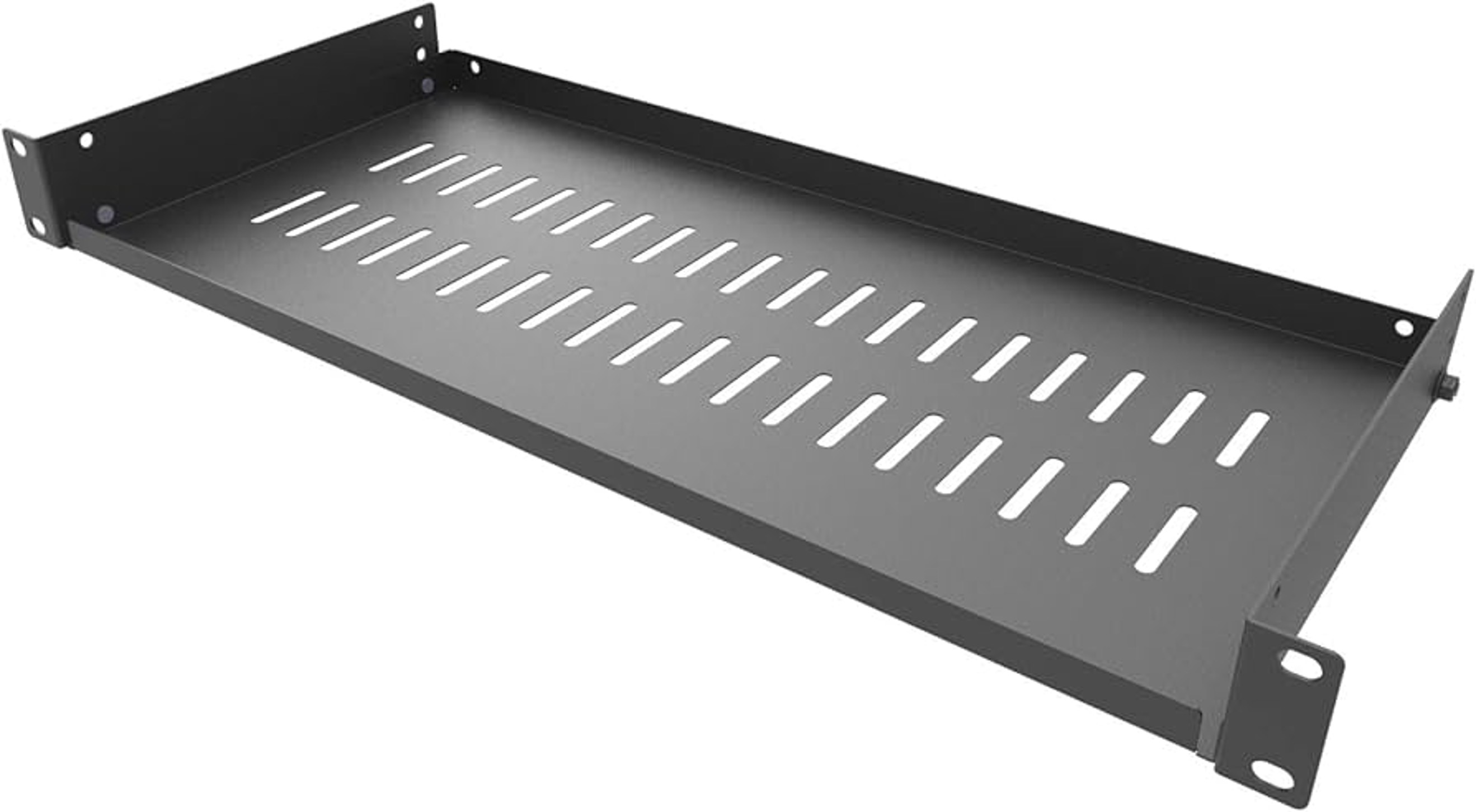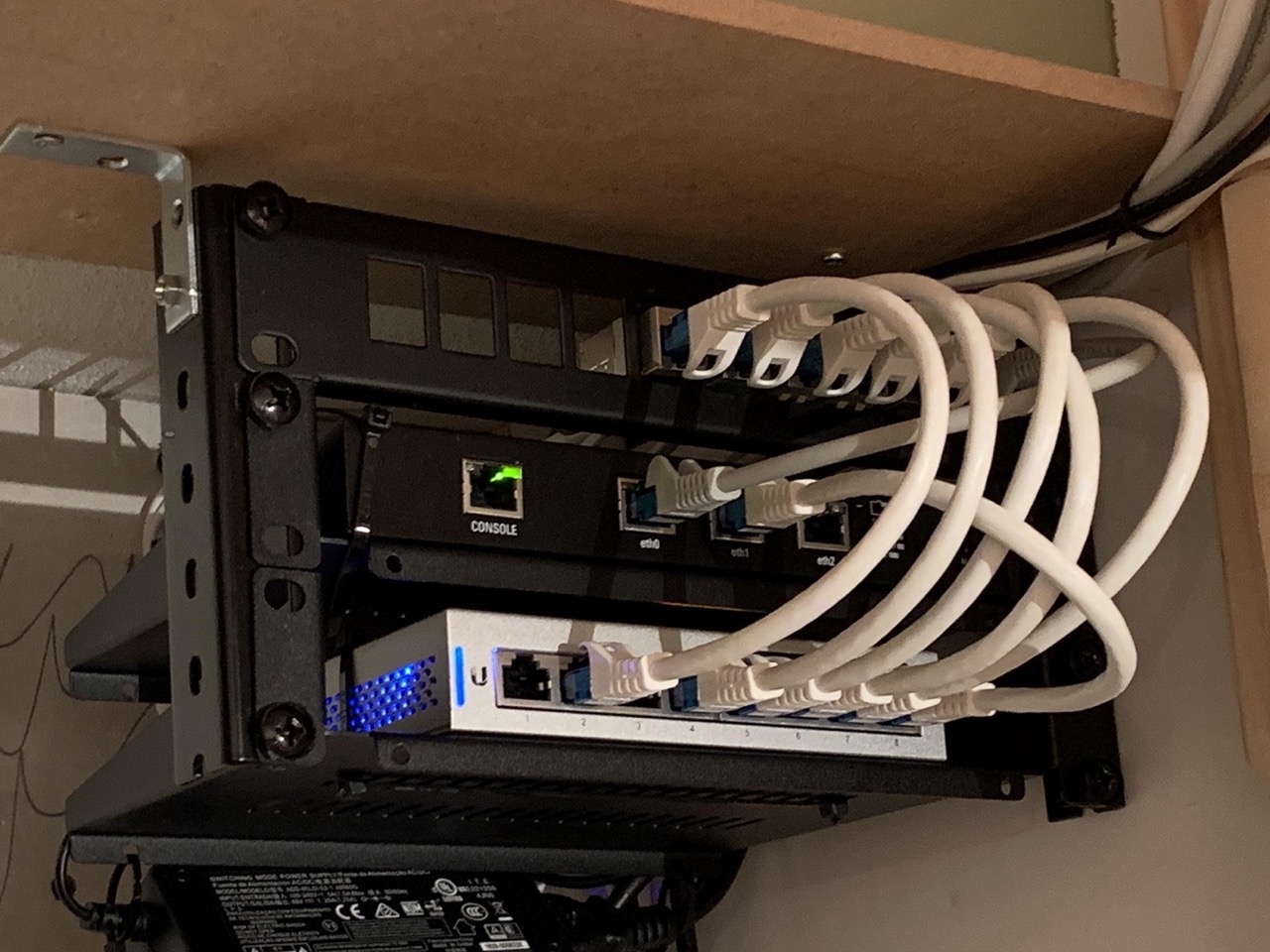Introduction
Are you tired of your desktop computer taking up valuable space on your desk? Do you need a more efficient way to store and manage multiple computers in a compact and organized manner? If so, a rack mount PC case might be the perfect solution for you.
A rack mount PC case is a specialized computer case designed to fit into a server rack. It allows you to vertically stack multiple computers, making the most of limited space while providing easy access and efficient cable management.
In this article, we will explore the world of rack mount PC cases, including their benefits, considerations before purchasing, and a step-by-step guide on how to rack mount a PC case. Whether you’re a professional IT technician or a tech-savvy enthusiast, this article will provide valuable information to help you make an informed decision about rack mounting your PC case.
So, if you’re ready to declutter your workspace and streamline your computer setup, let’s dive into the world of rack mount PC cases and discover the ultimate solution for your needs.
What is a Rack Mount PC Case?
A rack mount PC case, also known as a rackmount chassis or a server case, is a specialized computer case designed to be mounted in a server rack. Unlike traditional desktop computer cases, rack mount cases are specifically built to fit the standardized dimensions of server racks, typically measuring 19 inches in width.
These cases come in various heights, such as 1U, 2U, 3U, and 4U, indicating the amount of vertical rack space they occupy. The “U” stands for “unit,” with each unit equal to 1.75 inches in height. So, a 4U case would take up 7 inches of rack space.
One of the defining features of a rack mount PC case is its front-to-back airflow design. Instead of the typical airflow from front to rear found in traditional desktop cases, rack mount cases are designed to draw cool air from the front and expel hot air out the back, ensuring efficient cooling for the stacked computers.
Rack mount cases also boast strong and sturdy construction to withstand the rigors of being installed in a server rack. They are made from durable materials such as steel or aluminum and often feature reinforced corners and rugged handles for ease of installation or removal.
Furthermore, these cases offer various mounting options and features to accommodate different hardware components. They typically have multiple drive bays, allowing you to install multiple hard drives or solid-state drives (SSDs). They also provide ample space for motherboard installation, power supply units, and expansion cards.
Overall, a rack mount PC case is a specialized housing unit that not only maximizes space efficiency but also offers superior cooling, enhanced durability, and versatility in accommodating various computer components.
Benefits of Using a Rack Mount PC Case
There are several compelling benefits to using a rack mount PC case, making it a popular choice among individuals and businesses alike. Let’s explore some of the key advantages:
- Space Efficiency: The primary advantage of a rack mount PC case is its space-saving design. By vertically stacking multiple computers in a server rack, you can significantly reduce the amount of floor or desk space they occupy. This is especially beneficial in environments where space is limited, such as data centers, server rooms, or home offices.
- Easy Scalability: Rack mount cases allow for easy scalability. With traditional desktop PC setups, adding or removing computers can be a time-consuming task. In contrast, with a rack mount PC case, you can simply slide in or remove a computer from the rack as needed. This makes it convenient to expand or downsize your computer setup without hassle.
- Cable Management: One of the challenges in managing multiple computers is dealing with the tangled mess of cables. Rack mount PC cases typically feature dedicated cable management options, such as cable routing holes or cable management arms. These features help organize and secure cables, reducing clutter and promoting better airflow for improved cooling.
- Improved Cooling: Speaking of cooling, rack mount cases often offer superior cooling capabilities compared to traditional desktop cases. The front-to-back airflow design, combined with the ability to install additional cooling fans, ensures efficient heat dissipation even when multiple computers are stacked closely together. This helps prevent overheating and increases the lifespan of your hardware.
- Enhanced Security: Rack mount cases provide enhanced physical security for your computers. Most server racks can be locked, preventing unauthorized access and reducing the risk of theft or tampering. Additionally, rack mount cases may offer built-in features to secure internal components, such as locking drive bays or panels.
- Centralized Management: With a rack mount PC case, you can consolidate and centralize the management of multiple computers. This makes it easier to monitor and control the systems, whether it’s for maintenance, troubleshooting, or remote access. It simplifies tasks such as software updates, system backups, and monitoring hardware performance.
In summary, using a rack mount PC case offers space efficiency, scalability, improved cable management, superior cooling, enhanced security, and centralized management. These advantages make rack mount cases a popular choice for individuals and organizations looking to optimize their computer setups and streamline their operations.
Things to Consider Before Purchasing a Rack Mount PC Case
Before making a purchase decision, there are several important factors to consider when choosing a rack mount PC case. Taking the time to evaluate these considerations will ensure that you select a case that meets your specific needs and requirements. Here are some key factors to keep in mind:
- Size and Form Factor: Rack mount PC cases are available in different sizes and form factors, including 1U, 2U, 3U, and 4U. Consider the available space in your rack and the number of computers you plan to mount before selecting the appropriate size. Additionally, ensure that the case has enough clearance for your hardware components, such as the motherboard, expansion cards, and power supply.
- Airflow and Cooling: Efficient cooling is crucial for the optimal performance and longevity of your equipment. Consider the cooling capabilities of the rack mount case you are considering. Look for features like fan mounts, ventilation holes, and airflow design that facilitate proper heat dissipation. Also, consider the noise levels produced by the fans, especially if the rack is located in a noise-sensitive environment.
- Hardware Compatibility: Ensure that the rack mount case is compatible with your hardware components. Check the maximum motherboard size, drive bays, and expansion slots available in the case. Verify that the case supports the form factor of your power supply unit and cooling solutions, such as CPU coolers or liquid cooling systems.
- Cable Management: Good cable management is crucial for a neat and organized setup. Look for features like cable routing holes, cable management arms, or built-in cable management options. These features will help keep your cables organized, minimize clutter, and improve airflow within the case.
- Accessibility: Consider how easy it will be to access and maintain your equipment once it’s mounted in the case. Look for features like tool-less drive bays, removable side panels, and front panel access to simplify hardware installation, upgrades, and maintenance tasks.
- Build Quality and Durability: Rack mount cases should be built to withstand the rigors of being installed in a server rack. Consider the materials used in construction, such as steel or aluminum, and look for additional reinforcement at critical points like corners or handles. Opt for cases that have a sturdy build to ensure the safety and security of your equipment.
- Price and Budget: Rack mount PC cases can vary significantly in price, depending on their features and quality. Set a realistic budget and consider the features that are essential for your setup. Strike a balance between the price and the features you require to make an informed decision.
By considering these factors, you can select the right rack mount PC case that meets your specific needs, accommodates your hardware, provides efficient cooling and cable management, and offers accessibility and durability within your budget.
Step by Step Guide: How to Rack Mount a PC Case
Rack mounting a PC case may seem overwhelming if you’ve never done it before, but it’s actually a straightforward process. Follow these step-by-step instructions to properly mount your PC case in a server rack:
- Prepare the Server Rack: Ensure that your server rack is stable, level, and securely anchored. Check that the appropriate U spaces are available for your PC case. Remove any obstacles or debris from the rack.
- Prepare the PC Case: Before mounting, remove the side panels, any removable drive cages, and other components that may obstruct the installation process. Also, ensure that your PC case has all the necessary mounting brackets and screws.
- Position the PC Case: Carefully position the PC case in front of the server rack. Align the mounting holes on the sides of the case with the corresponding holes in the rack. Use caution to avoid damaging the case or the rack during this step.
- Attach the Mounting Brackets: Once the case is properly aligned, secure the mounting brackets to the sides of the case. Insert the screws through the holes in the brackets and tighten them snugly but not overly tight. Ensure that the brackets are properly aligned and secure.
- Insert the PC Case in the Rack: With the mounting brackets securely attached, carefully slide the PC case into the server rack. Use both hands to guide the case, ensuring that it stays aligned as you push it into the rack. Be mindful of any cables or obstructions that may hinder the installation process.
- Align and Secure the PC Case: Once the case is fully inserted, ensure that it is properly aligned with the other equipment in the rack. Check that the mounting brackets engage with the rack’s mounting rails or holes. Once aligned, tighten the screws on the mounting brackets to secure the PC case in place.
- Reassemble the Components: Reattach any removable components or drive cages that were removed earlier. Ensure they are securely fastened and properly aligned. This step may involve reconnecting cables and organizing them using the cable management options provided by the case.
- Test and Verify: After mounting the PC case, power on your equipment and check for any signs of loose connections or abnormal behavior. Validate that the case is securely mounted and that all components are working as expected.
Following these steps will ensure that your PC case is securely and properly mounted in the server rack, allowing for efficient operation and easy access for future maintenance or upgrades.
Tips and Tricks for Rack Mounting PC Cases
Rack mounting a PC case requires precision and attention to detail. To help you navigate the process smoothly, here are some useful tips and tricks to keep in mind:
- Measure Twice, Mount Once: Before starting the installation, double-check the measurements to ensure the server rack has enough space and that the PC case is compatible with the rack’s size and form factor.
- Organize Cables Before Mounting: Take the time to organize and manage your cables before mounting the PC case. This will make the installation process smoother and ensure better airflow within the rack.
- Keep Track of Screws and Hardware: Keep all screws, brackets, and other mounting hardware in a safe place. It’s a good practice to label or sort them to ensure easy access during installation or if you need to make adjustments later.
- Utilize Cable Management Options: Make full use of the cable management options provided by the rack mount PC case. Use cable ties, Velcro straps, or cable management panels to keep your cables organized, reduce clutter, and improve airflow.
- Load Heavier Components First: When rack mounting multiple computers or equipment, start with the heavier components at the bottom of the rack. This will help maintain stability and ensure proper weight distribution.
- Leave Space for Airflow: Allow for proper airflow within the server rack. Avoid overcrowding the rack, as it can hinder cooling and lead to overheating. Leave space between the mounted PC cases to ensure adequate ventilation.
- Label Your Equipment: Label each PC case with a unique identifier or name to easily identify and locate specific equipment. This can be especially helpful in larger racks or when troubleshooting or performing maintenance tasks.
- Consider Rack Rails: If you frequently need to remove or adjust the position of your PC case, consider installing rack rails. Rack rails provide a sliding mechanism for easy access to the equipment without the need to fully remove it from the rack.
- Regularly Inspect and Maintain: Once the PC cases are rack mounted, regularly inspect and clean the equipment. Check for any loose screws or components and ensure all connections are secure. Perform routine maintenance to prevent dust buildup and maintain optimal performance.
- Refer to Manufacturer Guidelines: Always consult the manufacturer’s guidelines and instructions specific to your rack mount case model. Following the recommended guidelines will ensure proper installation, prevent damage, and maintain the warranty.
By following these tips and tricks, you can make the rack mounting process smoother, ensure better organization and airflow within your server rack, and maintain the integrity of your equipment for optimal performance and longevity.
Common Mistakes to Avoid When Rack Mounting a PC Case
Rack mounting a PC case requires precision and careful attention to detail. To ensure a successful installation and prevent any potential issues, it’s important to be aware of common mistakes that should be avoided. Here are some key mistakes to watch out for:
- Inadequate Measurement: Failing to accurately measure the height and depth of the server rack can lead to compatibility issues. Always measure the available space in the rack and check the specifications of the PC case to ensure a proper fit.
- Poor Cable Management: Neglecting to properly organize and manage cables can lead to airflow restrictions, cooling problems, and difficulty accessing components. Take the time to neatly route and secure cables using cable management options provided by the rack mount case.
- Insufficient Airflow: Overcrowding the rack or obstructing airflow within the rack can lead to overheating and reduced performance of the equipment. Leave sufficient space between mounted PC cases to allow for proper ventilation and cooling.
- Improper Mounting: Rushing through the mounting process or not securely attaching the PC case to the rack can result in instability and potential damage. Ensure that the mounting brackets are properly aligned, and the screws are tightened adequately to secure the case in place.
- Ignoring Weight Limits: Every server rack has weight limits that should be adhered to. Overloading the rack with heavy equipment can jeopardize the structural integrity of the rack and pose safety risks. Always consider the weight of the PC case and other components before mounting them.
- Failure to Test and Validate: After mounting the PC case, it’s important to power on the equipment and verify that everything is functioning correctly. Skipping this step may result in issues that go unnoticed until it’s too late.
- Forgetting to Label: Neglecting to label the PC case can make it challenging to identify specific equipment in a crowded rack. Take the time to label each case with a unique identifier or name for easier identification and troubleshooting purposes.
- Skipping Manufacturer Guidelines: Each rack mount case may have specific guidelines and instructions provided by the manufacturer. Ignoring these guidelines can lead to improper installation and void the warranty. Always refer to the manufacturer’s instructions for the specific model of your rack mount case.
- Ignoring Maintenance and Inspections: Once the case is rack mounted, it’s essential to regularly inspect and maintain the equipment. Failing to do so can result in dust buildup, loose connections, and reduced performance. Schedule routine inspections and cleaning to ensure optimal functionality and longevity.
- Not Considering Future Expansion: When selecting a rack mount case, it’s important to consider future expansion needs. Failure to account for potential growth can result in the need for additional rack space or the purchase of a new case down the line.
By being aware of these common mistakes and taking the necessary precautions, you can avoid potential pitfalls and ensure a successful and efficient rack mounting process for your PC case.
Conclusion
Rack mount PC cases offer a practical and efficient solution for organizing and managing multiple computers in a server rack. By utilizing these specialized cases, you can maximize space efficiency, improve cable management, enhance cooling capabilities, and streamline your computer setup.
In this article, we explored what a rack mount PC case is and discussed the benefits of using one. We also provided important considerations to keep in mind before purchasing a rack mount case, such as size, airflow, hardware compatibility, and cable management options.
Additionally, we provided a step-by-step guide on how to rack mount a PC case, highlighting the importance of proper measurement, secure installation, and cable management. We also shared some valuable tips and tricks to make the process smoother and avoid common mistakes that can lead to issues down the line.
By following the guidelines and taking the necessary precautions, you can successfully rack mount your PC cases and enjoy the benefits of an organized, scalable, and efficient computer setup.
Remember to refer to the manufacturer’s instructions and guidelines for your specific rack mount case model to ensure proper installation and maintenance. Routine inspections, testing, and maintenance are essential to prolonging the lifespan and optimizing the performance of your equipment.
So, whether you are setting up a data center, managing a server room, or simply looking to declutter and streamline your home office, a rack mount PC case can be a valuable investment. Evaluate your needs, select the right case for your setup, and enjoy the benefits of a well-organized and efficient IT infrastructure.







